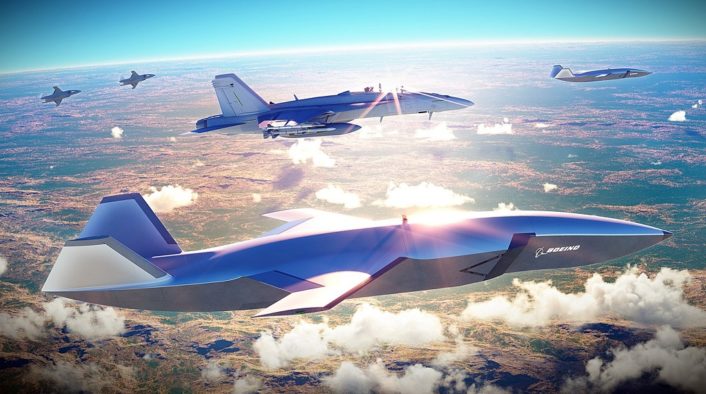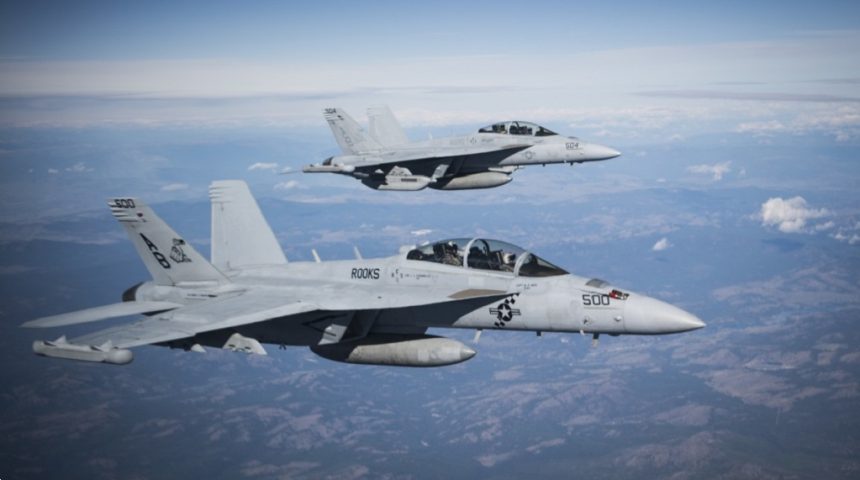The Growlers performed 21 demo missions during four flights at NAS Pax River.
Boeing announced on Feb. 4, 2020 that the company performed a joint test with the U.S. Navy during which two EA-18G Growlers were flown as Unmanned Air Systems and controlled by a third Growler. This flight test is part of the Navy Warfare Development Command’s annual fleet experiment (FLEX) exercises at Naval Air Station Patuxent River, home of Naval Air Systems Command (NAVAIR) and the U.S. Naval Test Pilot School.
According to Boeing, the three Growlers performed 21 different demonstration missions during four flights, proving that the current technology allows F/A-18E/F Super Hornets and EA-18G Growlers to perform combat missions with unmanned systems, if required. Although not stated, the two autonomous Growlers most probably were not completely unmanned, but had pilots on board for safety reasons.
“This demonstration allows Boeing and the Navy the opportunity to analyze the data collected and decide where to make investments in future technologies. It could provide synergy with other U.S. Navy unmanned systems in development across the spectrum and in other services”, said Tom Brandt, Boeing Manned-UnManned Teaming demonstration lead.
No further details were disclosed by Boeing or the U.S. Navy about the test, but the “loyal wingman” programs immediately come to mind, like the XQ-58A for the U.S. Air Force or Boeing’s own Airpower Teaming System, offered last year to the Royal Australian Air Force. The former is currently undergoing an extensive flight test campaign while the latter, which was unveiled during the Avalon Air Show 2019, should fly for the first time this year.

“The Boeing Airpower Teaming System will provide a disruptive advantage for allied forces’ manned/unmanned missions,” said Kristin Robertson, vice president and general manager of Boeing Autonomous Systems, at the unveiling ceremony. “With its ability to reconfigure quickly and perform different types of missions in tandem with other aircraft, our newest addition to Boeing’s portfolio will truly be a force multiplier as it protects and projects air power.”
According to Boeing’s official statement, the Loyal Wingman – Advanced Development Program demonstrator for the Airpower Teaming System will have a 38 ft (11.7 m) length, a range in excess of 2,000 nmi and fighter-like performance, while integrating onboard sensors for Intelligence, Surveillance and Reconnaissance (ISR) and Electronic Warfare (EW) missions and using Artificial Intelligence (AI) independently or in cooperation with manned aircraft.
It is worth noting that the technology employed during this test may be useful also as a risk reduction feature for the EA-18G, making possible for the U.S. Navy to use the Growlers against more advanced Integrated Air Defense Systems (IADS), Advanced Layered Defence Systems or Anti Access/Area Denial (A2/AD) systems where higher risks of aircraft losses may be involved, avoiding this way to put in danger the crew of manned SEAD(Suppression of Enemy Air Defences)/EW aircraft.









